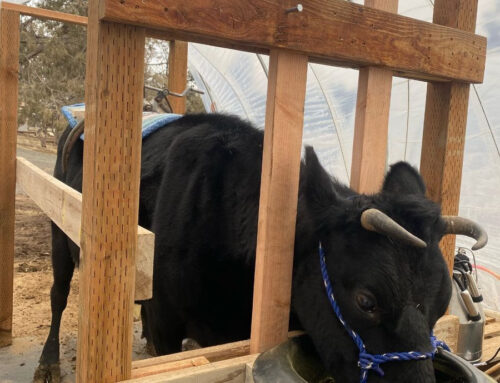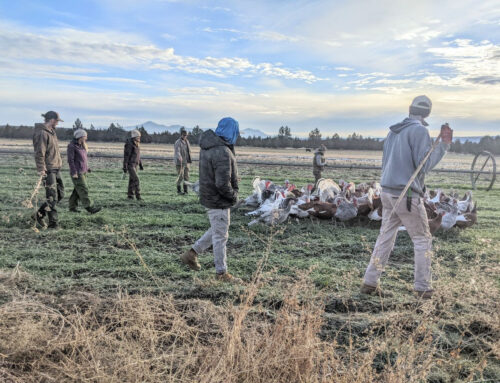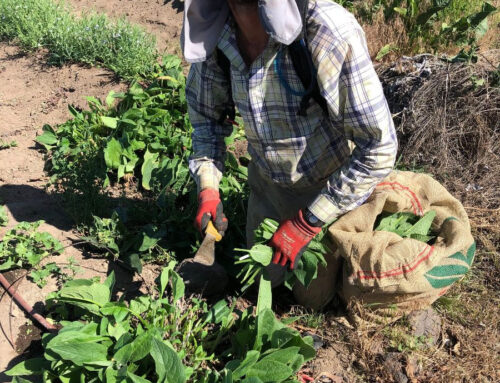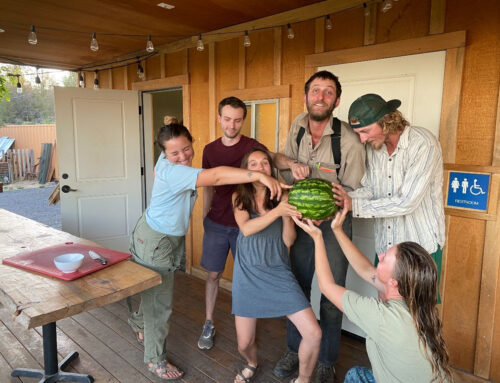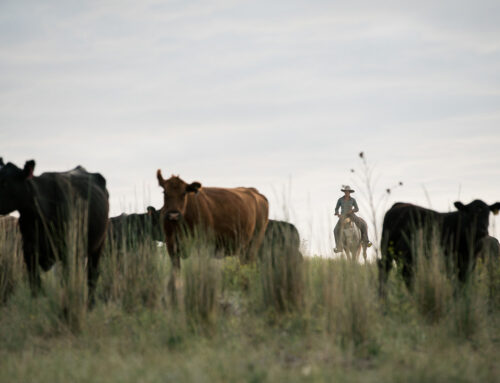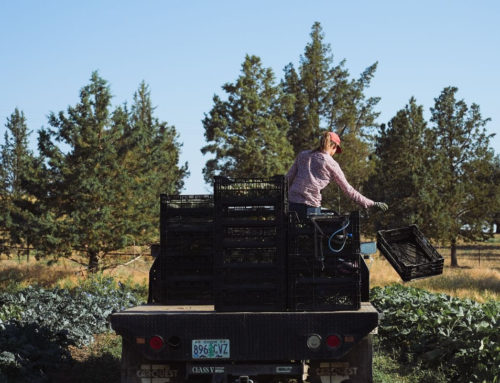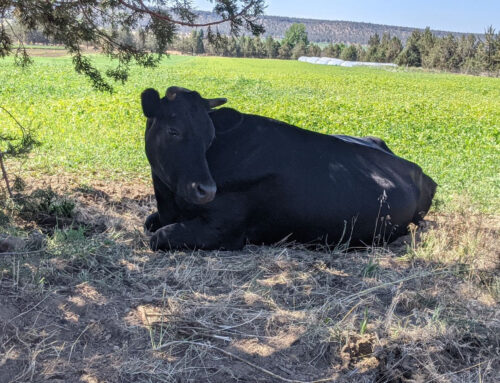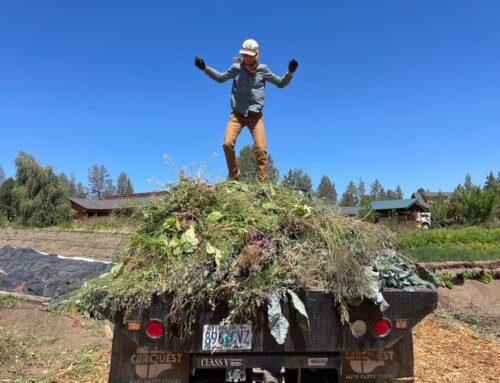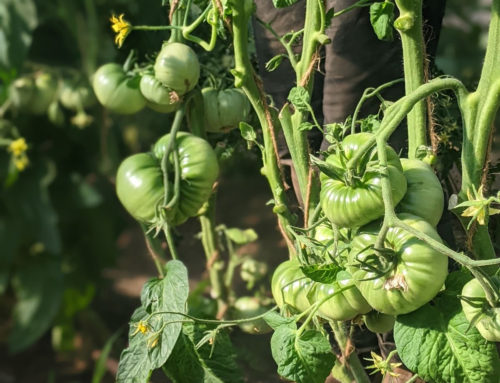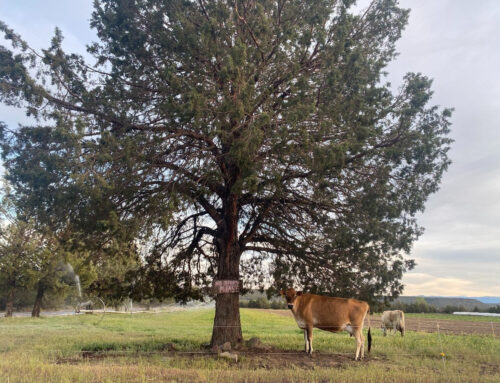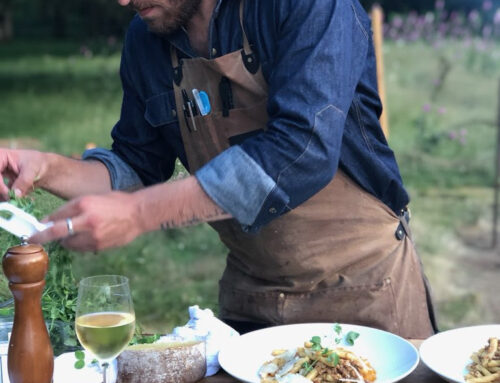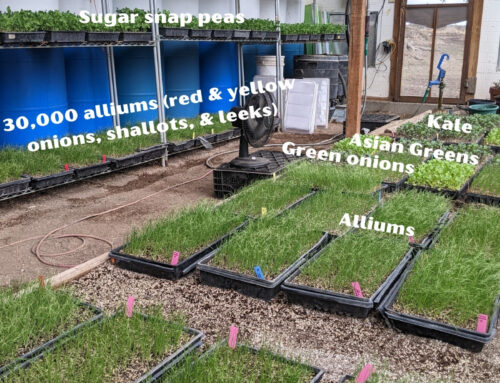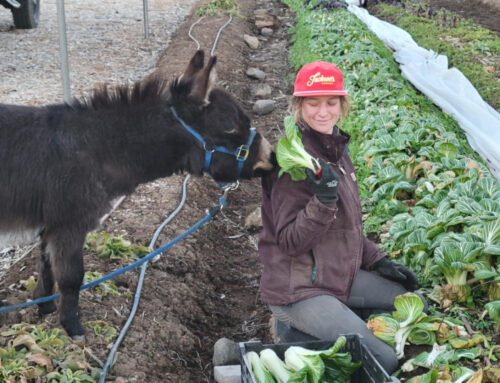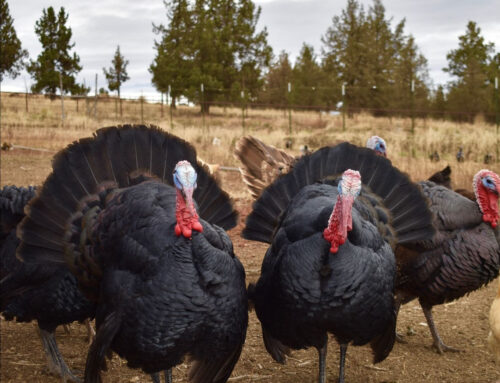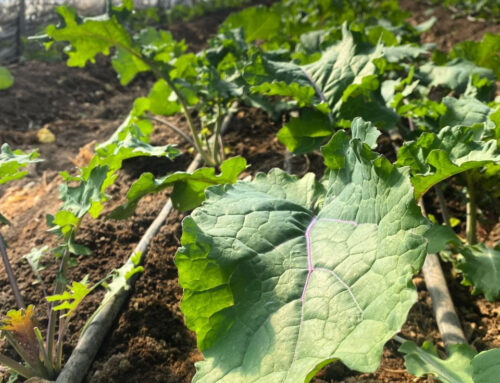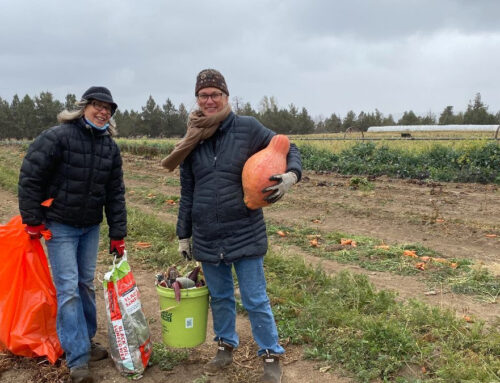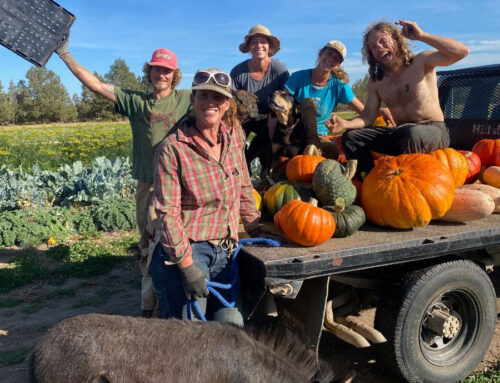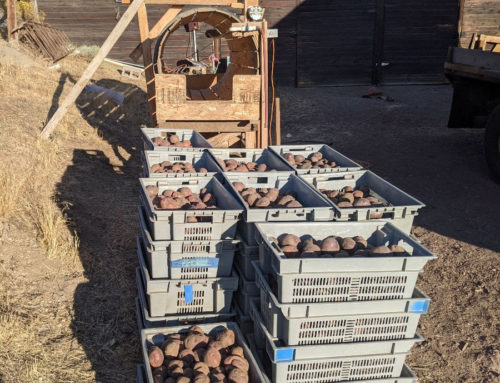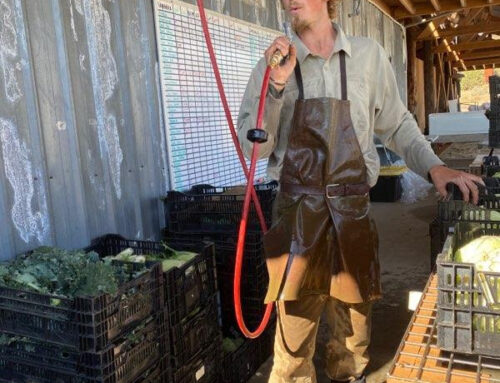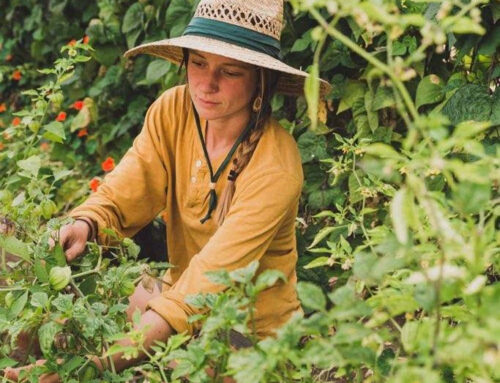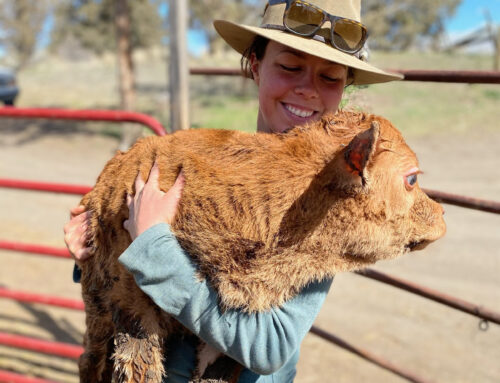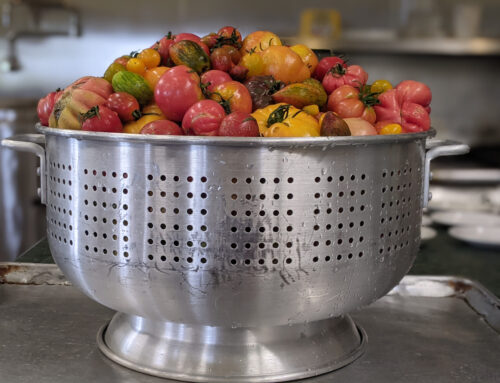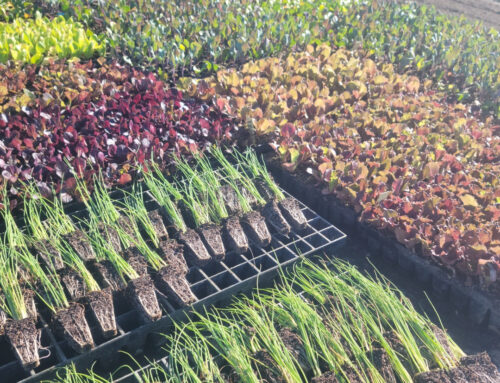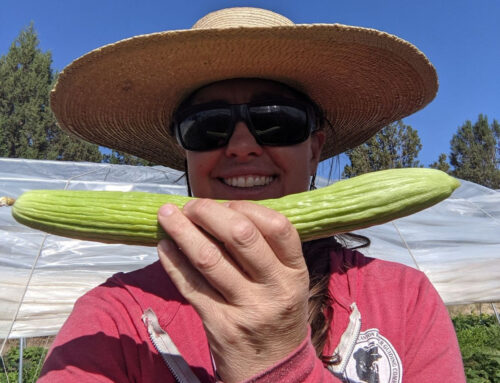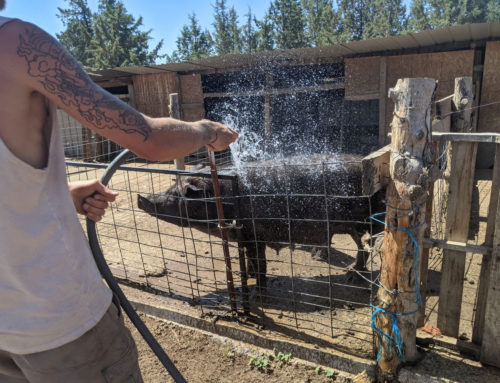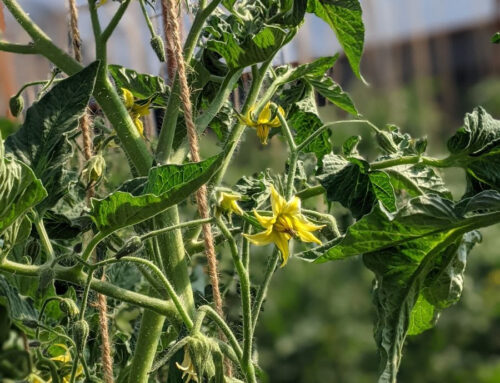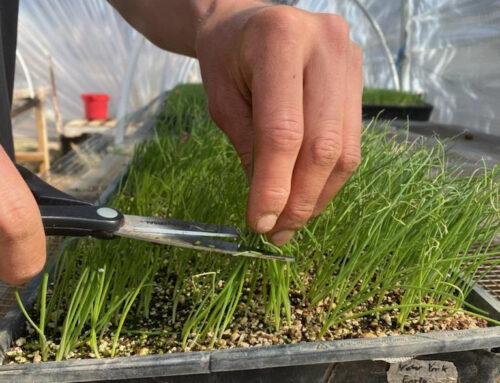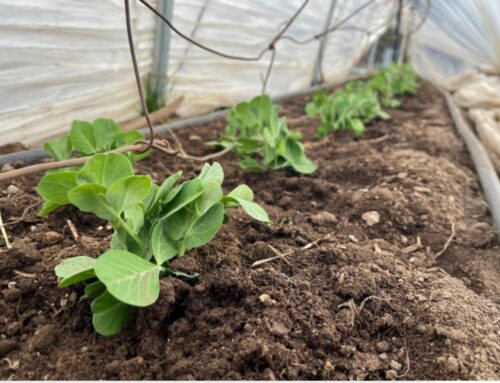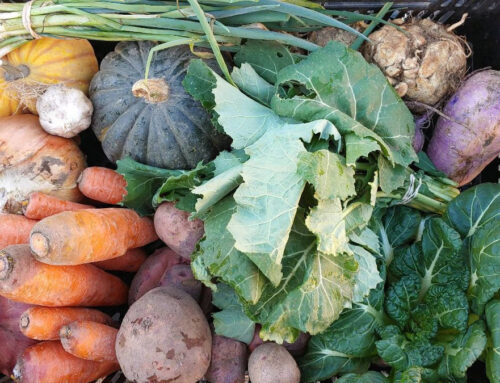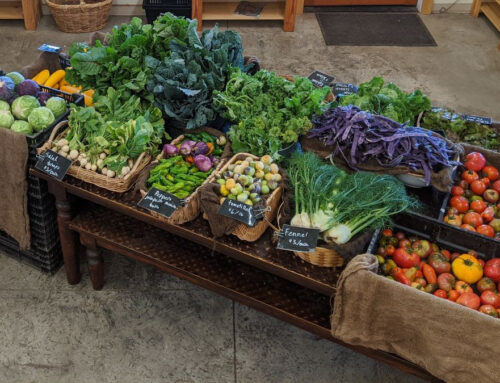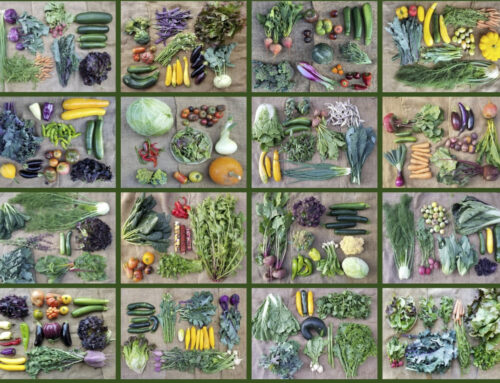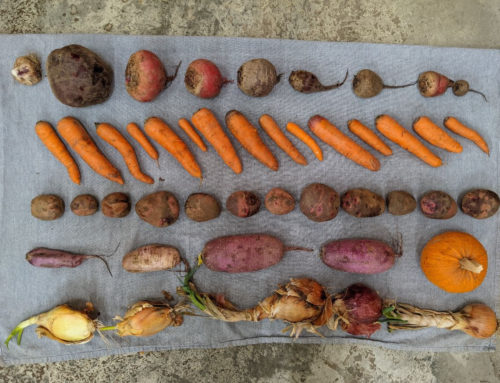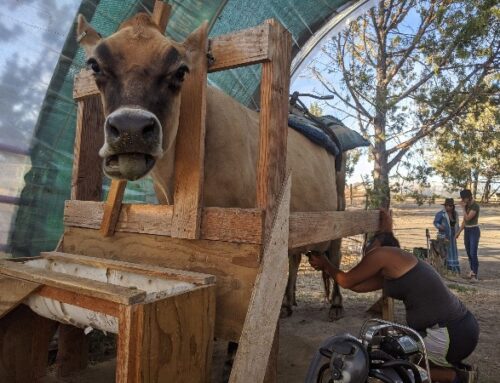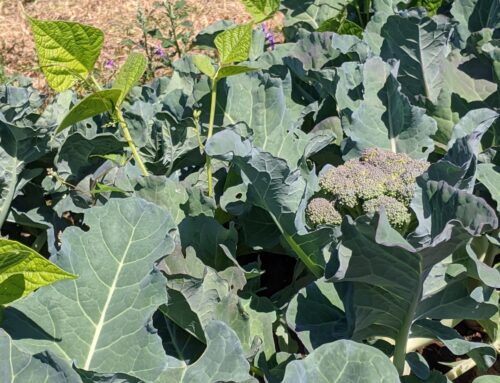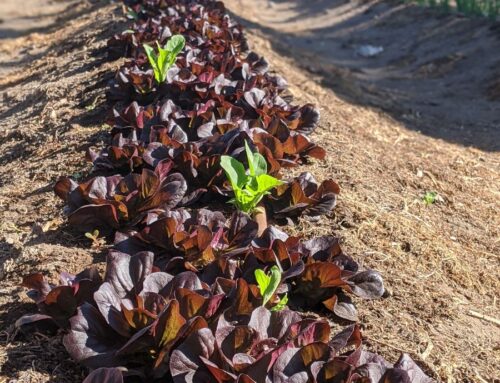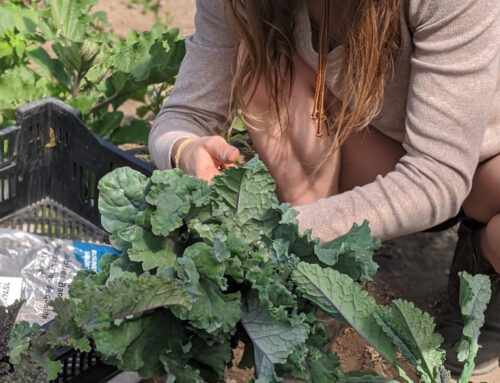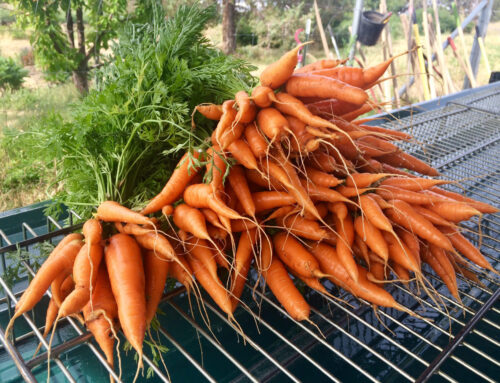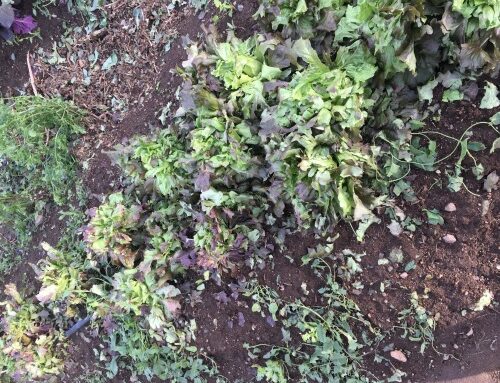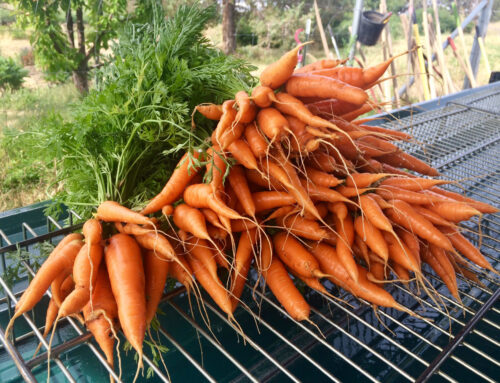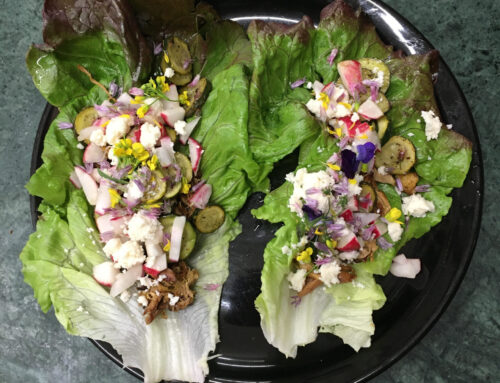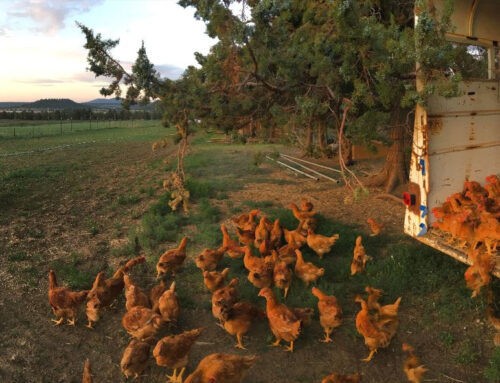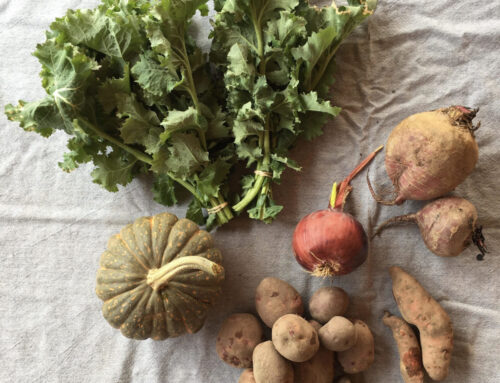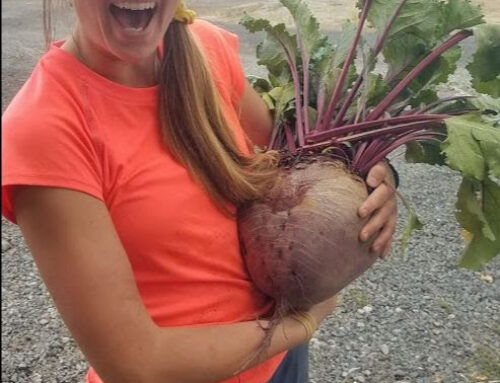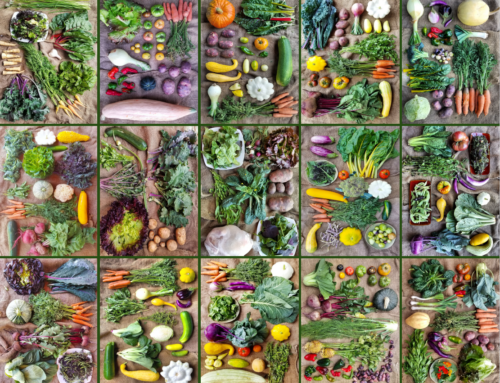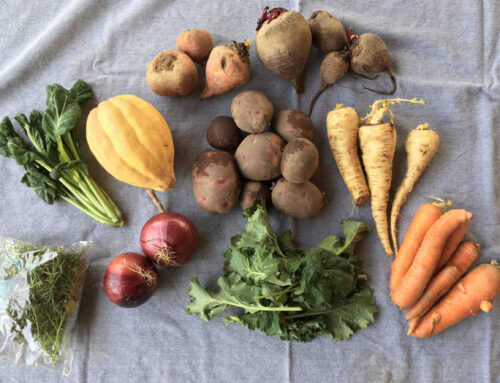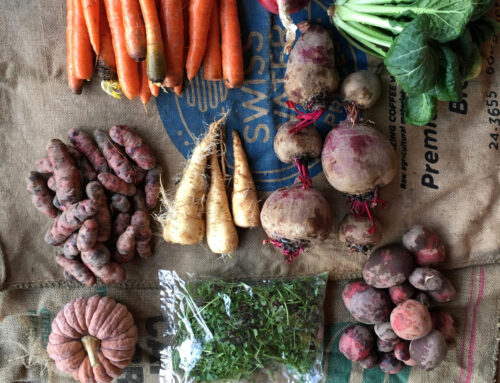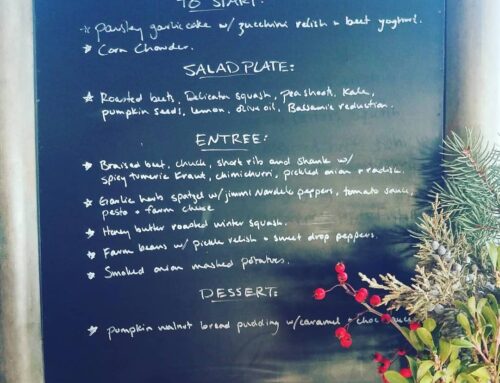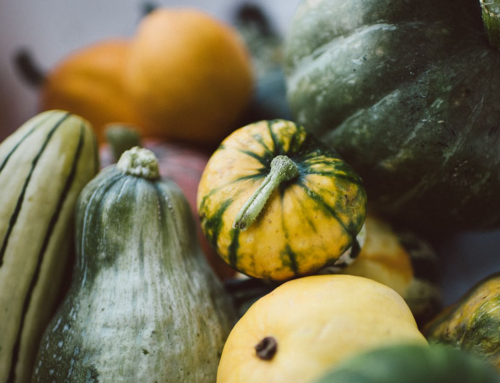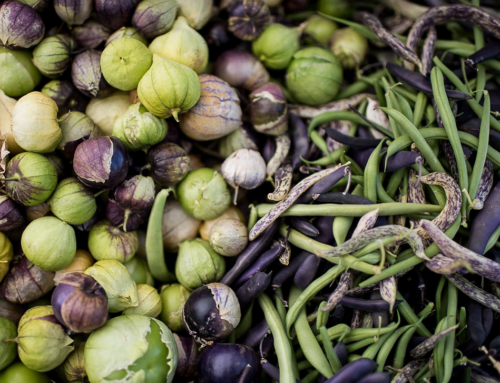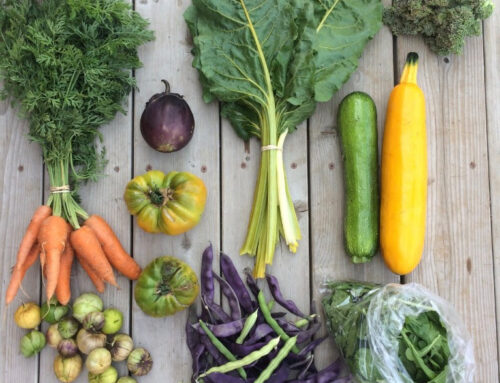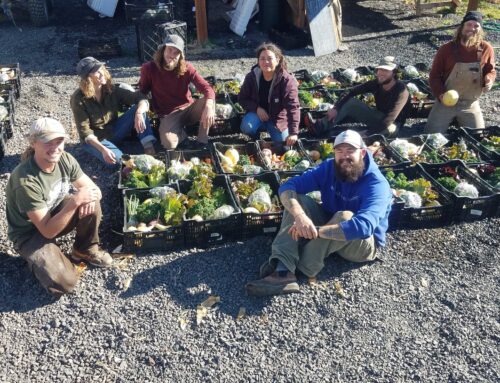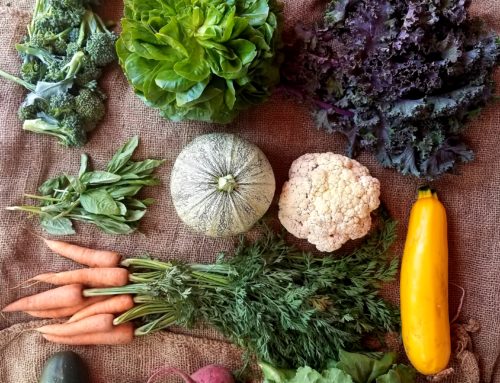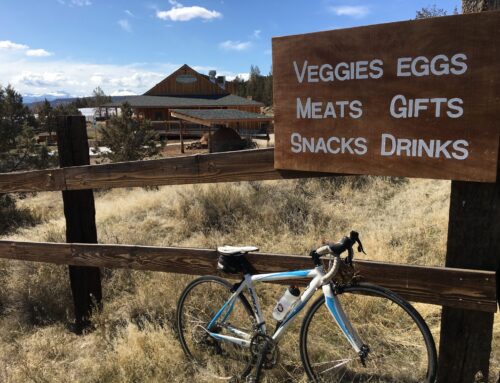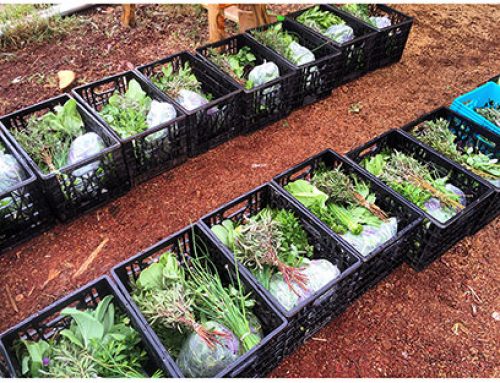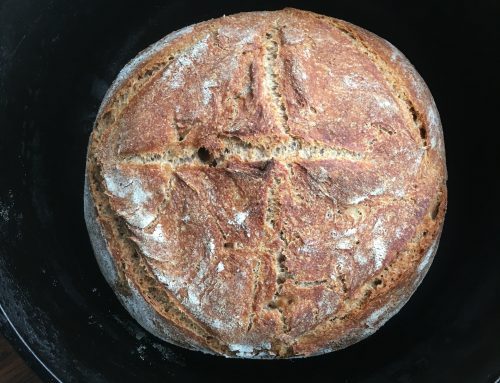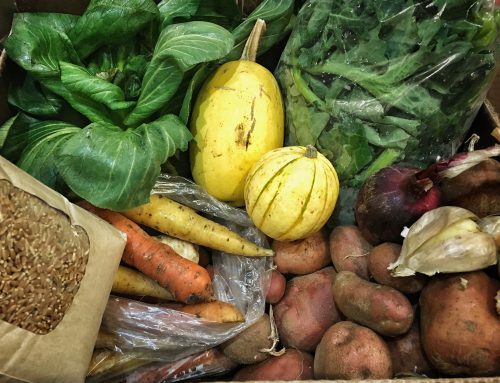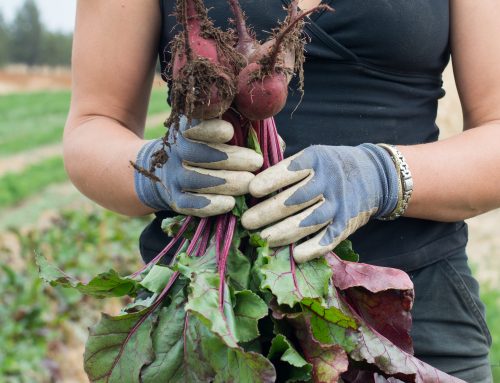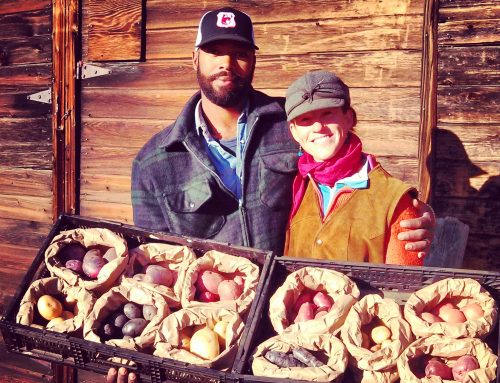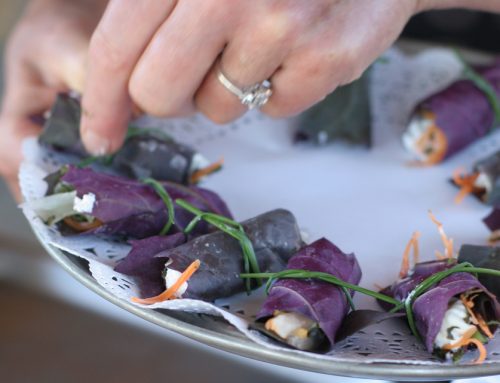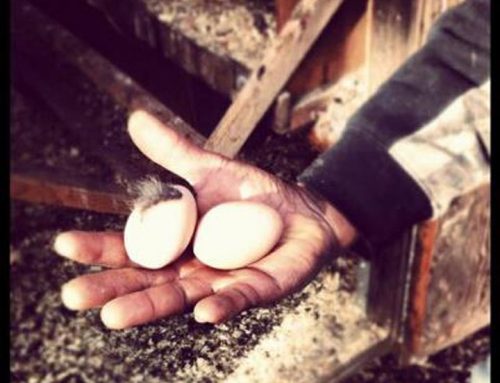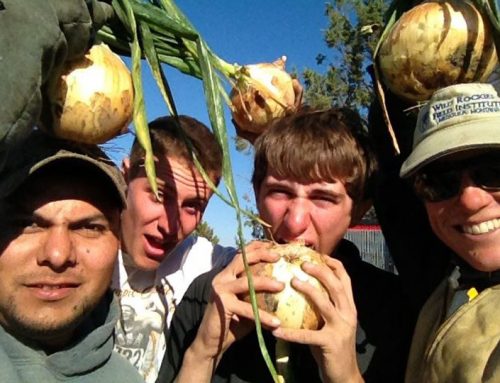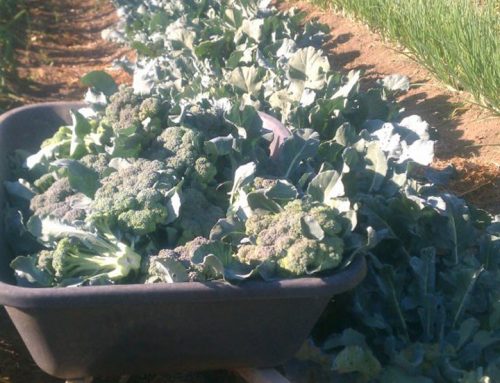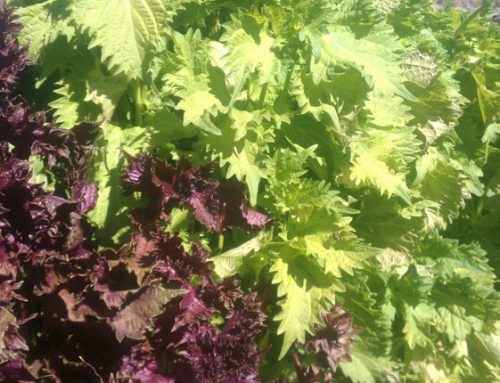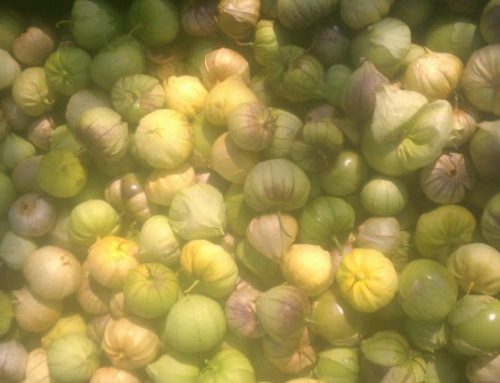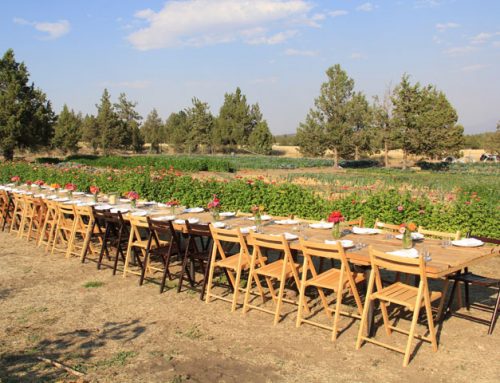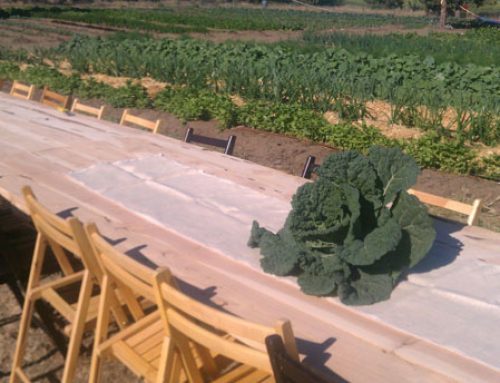
Today’s newsletter is written by: |

News from the Farm
Here on the farm the transition of seasons brings many changes. With September knocking at the door, farmers are pulling in crops for storage and the new seedlings and transplants are of our winter specialty: Siberian kale. In fact, this week we got our first succession of Siberian Kale planted in the hoop houses. You read that right, we are now growing our fresh winter greens!
Even with the farm focus changing to storage crop harvest and more colder varieties of fresh produce, there are a few things that won’t be changing and remain a steadfast gift year round on the farm. What I’m talking about in particular is our milk. Raw milk is a corner stone of our Full Diet CSA and our dairy program is one of the most complete integration and example of regenerative practices we have on the farm.
Our dairy herd grazes on our cover crop year round keeping the flowers and seed heads munched down so the nutrient dense cover crop supports the maximum soil community. With all that grazing comes manure and all the nutrients and natural fertilizers that pass through and out the herd go right back into the soil on the cover crop. All that grazing also keeps our dairy ladies in milk year round.
Neither rain, snow, nor summer heat keeps our ladies from patiently standing in their milking stanchion and allowing us to clean, massage and tug on their udders. Not everyone is lucky enough to have such well behaved dairy cows like ours. This didn’t come without plenty of practice, time and energy of course.
Part of forming a great milking experience is learning each of the cows personalities – their do’s and don’ts. The key is their respect for you. Because, trust me, if they don’t want to do something, they won’t.
Part of building a great relationship with your food is learning who is behind making it possible. So without further dilly dally let me introduce you to our Dairy Queen’s.
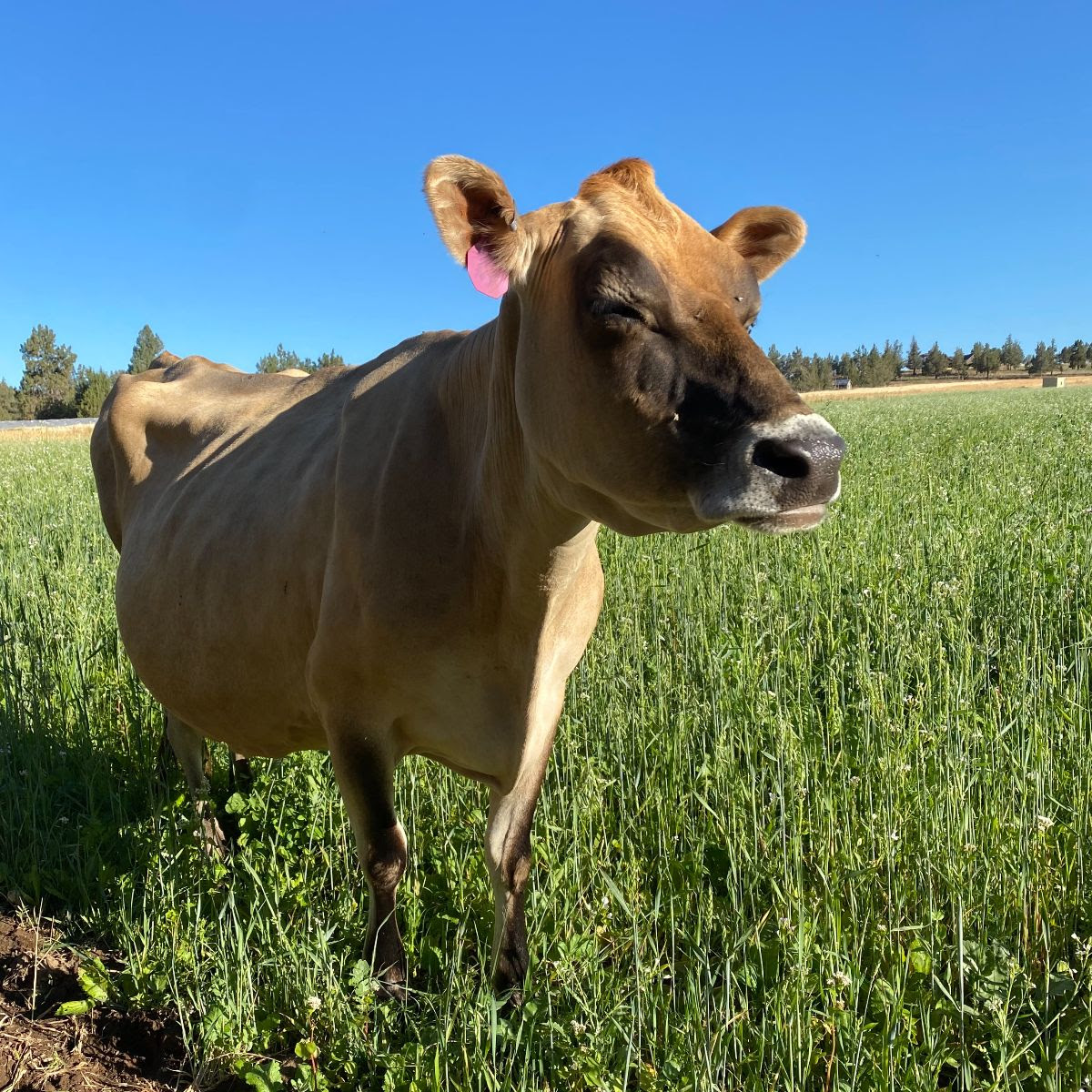
Ginny: The mother of our matriarchal pyramid. Ginny is a beautiful Jersey cow, who has absolute respect from all the others. If a younger cow is acting up and giving you trouble during milking time, Ginny will not hesitate to headbutt them and tell them to knock it off. With only three working teets she still produces as much or more milk as the other cows, a quarter her age. Ginny walks herself to the stanchion every morning to be milked without any encouragement. She even puts herself in a holding pen and waits if another cow is already being milked. She creeks, cracks, and grumbles with every step but don’t be mistaken she has found the fountain of youth!
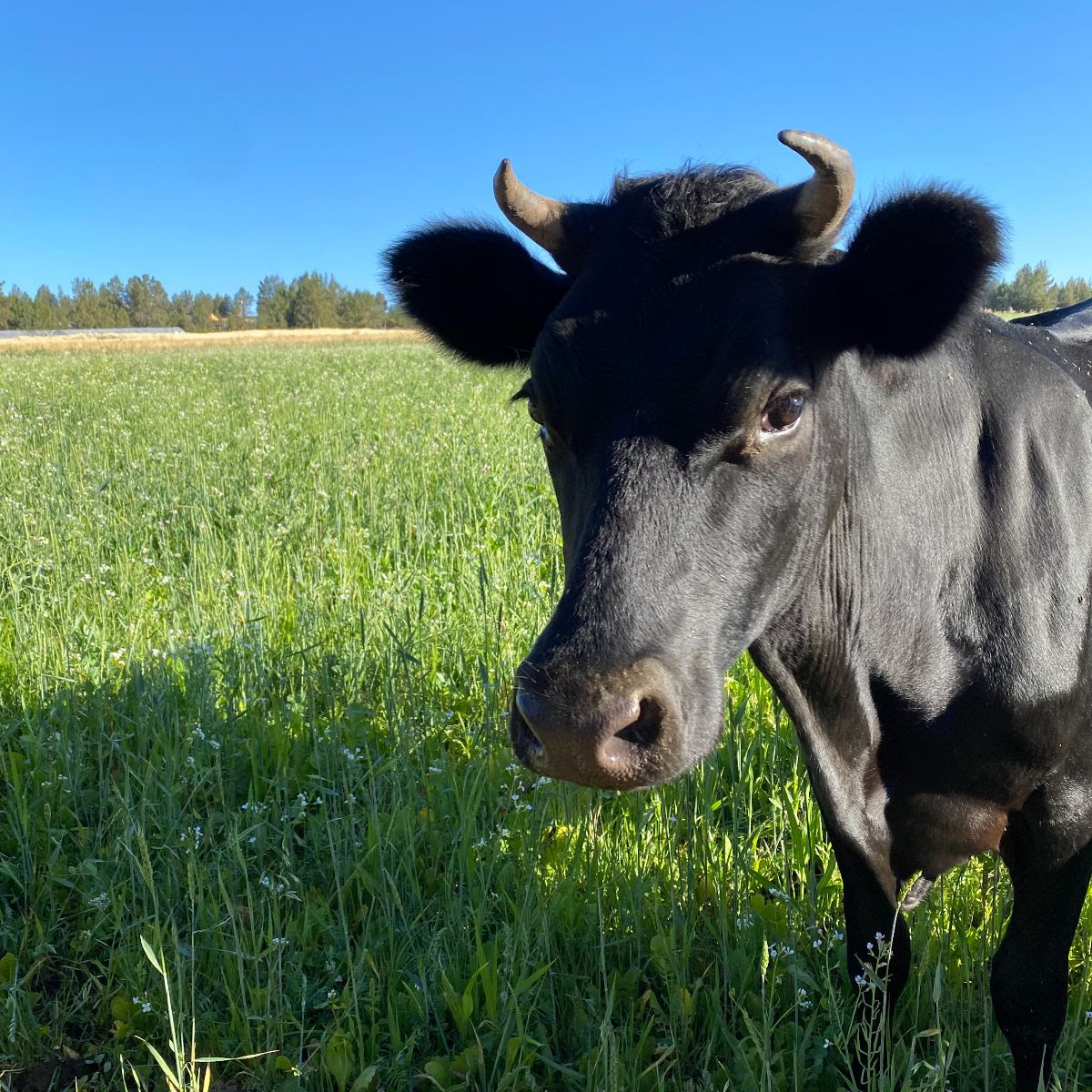
Amiga: They don’t look anything alike, but Amiga is the daughter of Ginny. The largest of all our cows, she also boasts the biggest personality. “Loose cannon” would be a good definition. Incredibly respectful and behaved for weeks on end, she waits for the perfect time to give you a couple days of hell. She is the only dairy cow with horns and she knows it. Some of her evil activities include swinging her large head around while you try and put the halter or, her personal favorite, a prison break and frolic through the middle of our crops. An incredible mother and protector of the group, Amiga is a farm favorite.
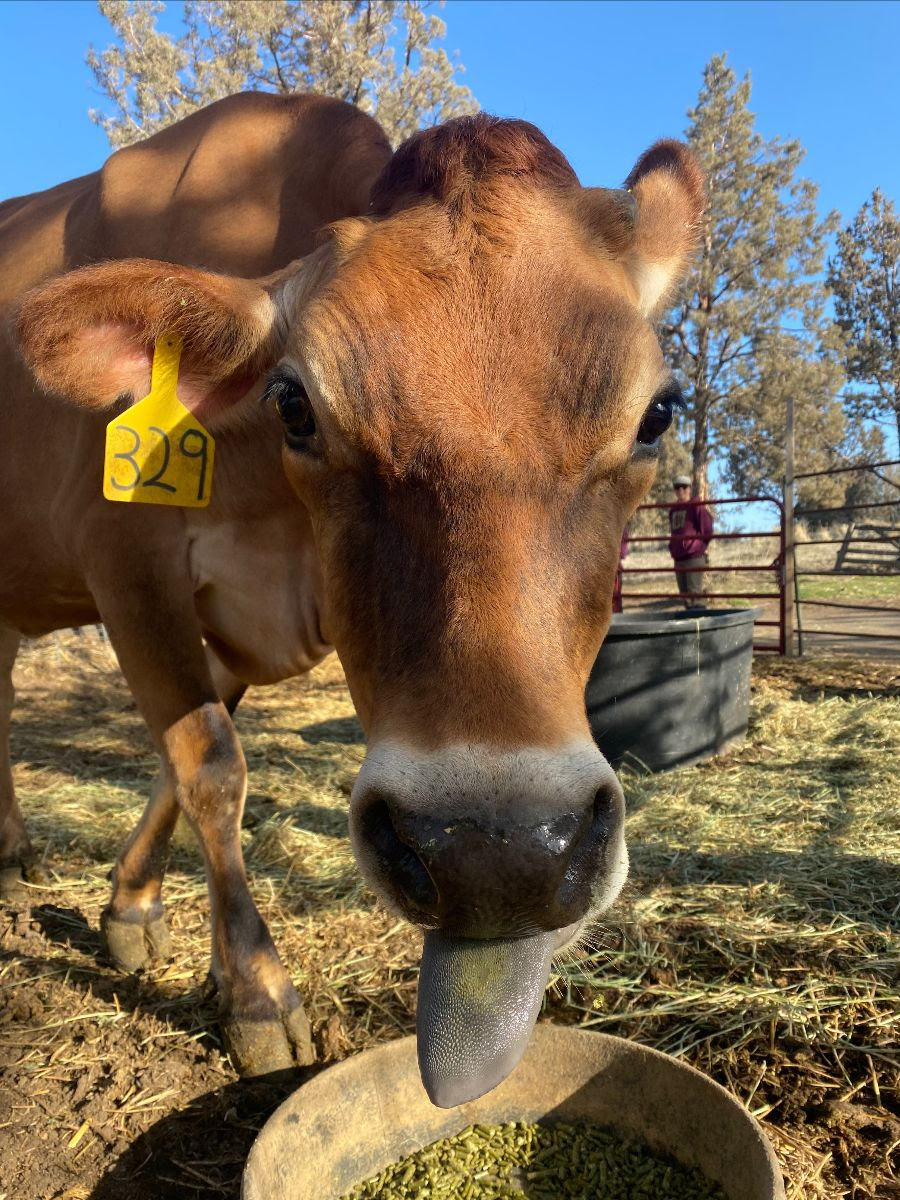
Marlow: Another Jersey cow that was a “dud” at a dairy operation in the Willamette valley. Marlow has overcome a slew of health and behavioral issues on her way to finding her niche here at Rainshadow. Though her erratic behavior might suggest she is a pain in the rear, she has proven to be an amazing surrogate mother to many calf’s over the last two years. Allowing any calf (sometimes two at a time) to drink her milk while taking them in as her own. You can always count on her to give you a story to tell the folks at lunch.
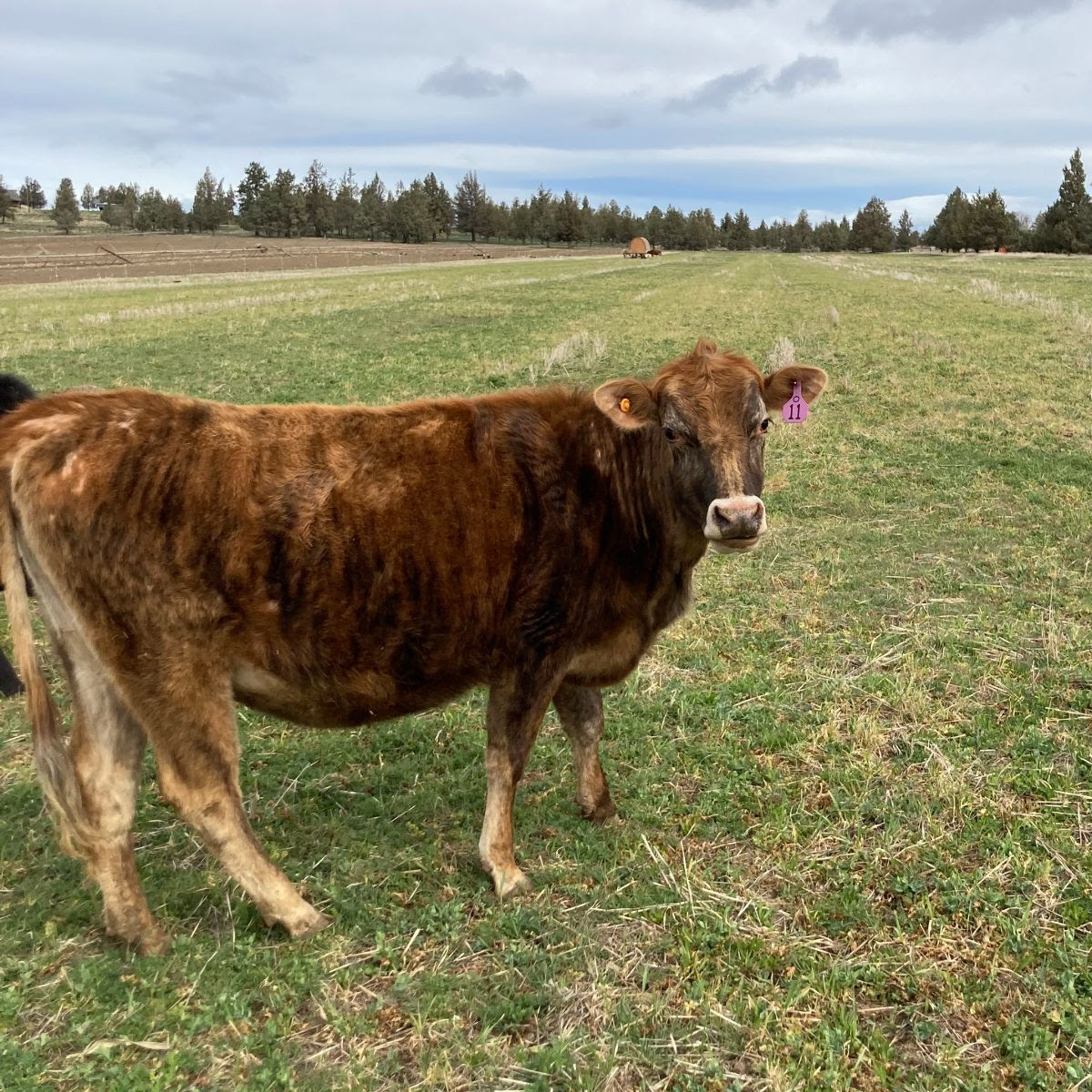
| Strawberry Moon: The beautiful brindle baby of Ginny born at night under the 2020 “strawberry super moon”. Moony takes after her mother in her kindness and big square face. Equipped with the perfect udder for milking, and a ferocious appetite for alfalfa pellets she is spoiled by everyone and we wait with fingers crossed for her to give us more cute brindle calves! |
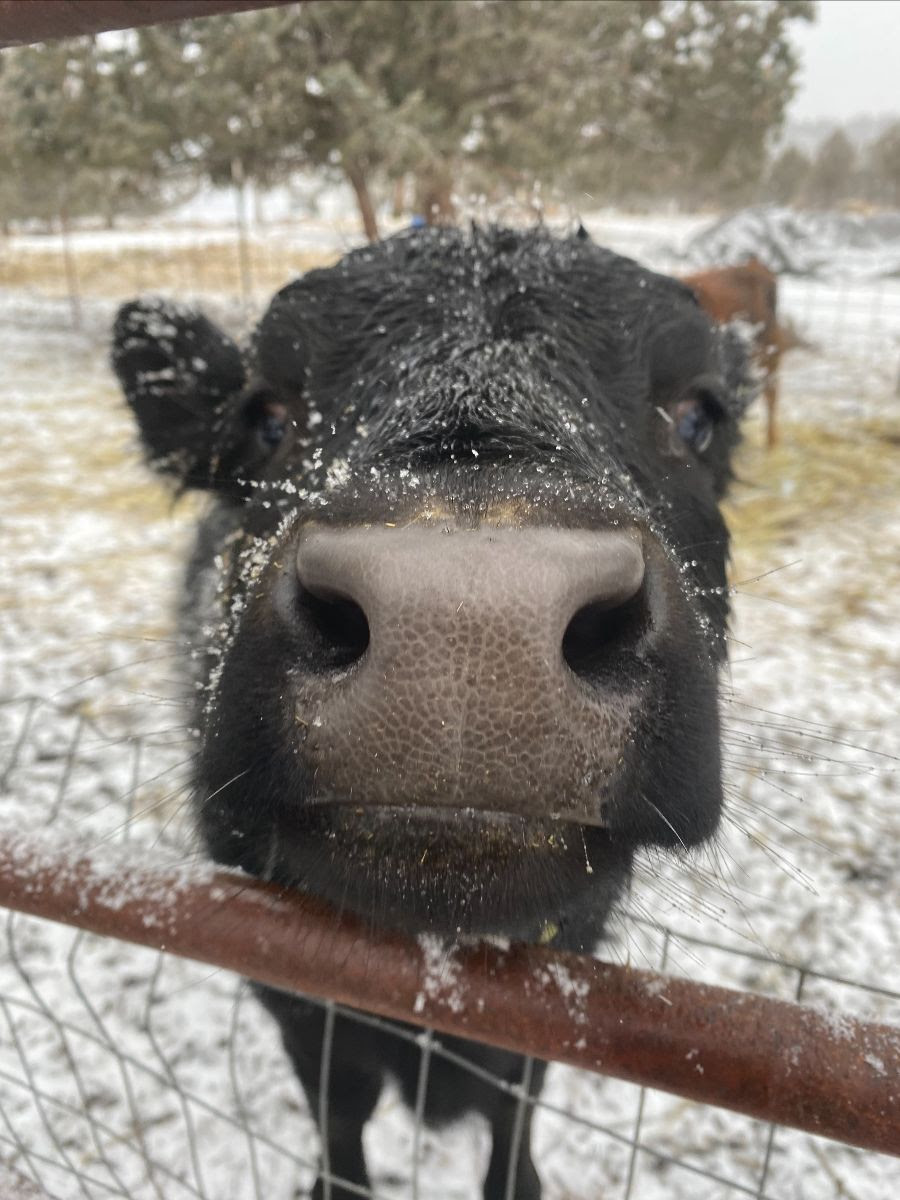
Anuenue: The rapscallion child of Amiga, Anuenue (Rainbow in Hawaiian). Is anything but colorful with her jet black coat. She has intelligence beyond her years and is Incredibly easy on the halter. But just like mother she finds her moments to throw a tantrum. She knows how to open unlatched gates and will make you pay if you are lackadaisical. Anuenue and Moony are similar in age and are best friends. You can find them grazing side by side along Lower Bridge road any day of the week.
Photos from the Week |
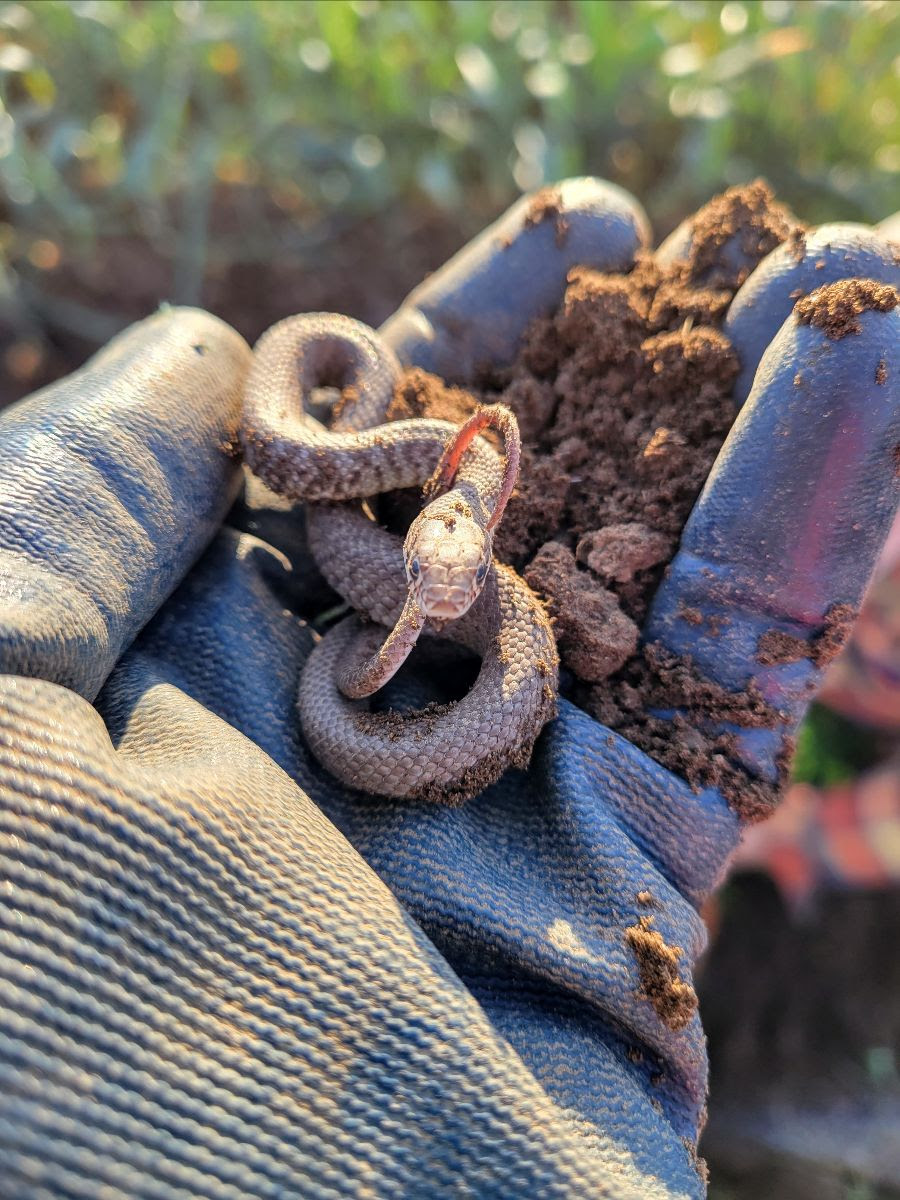
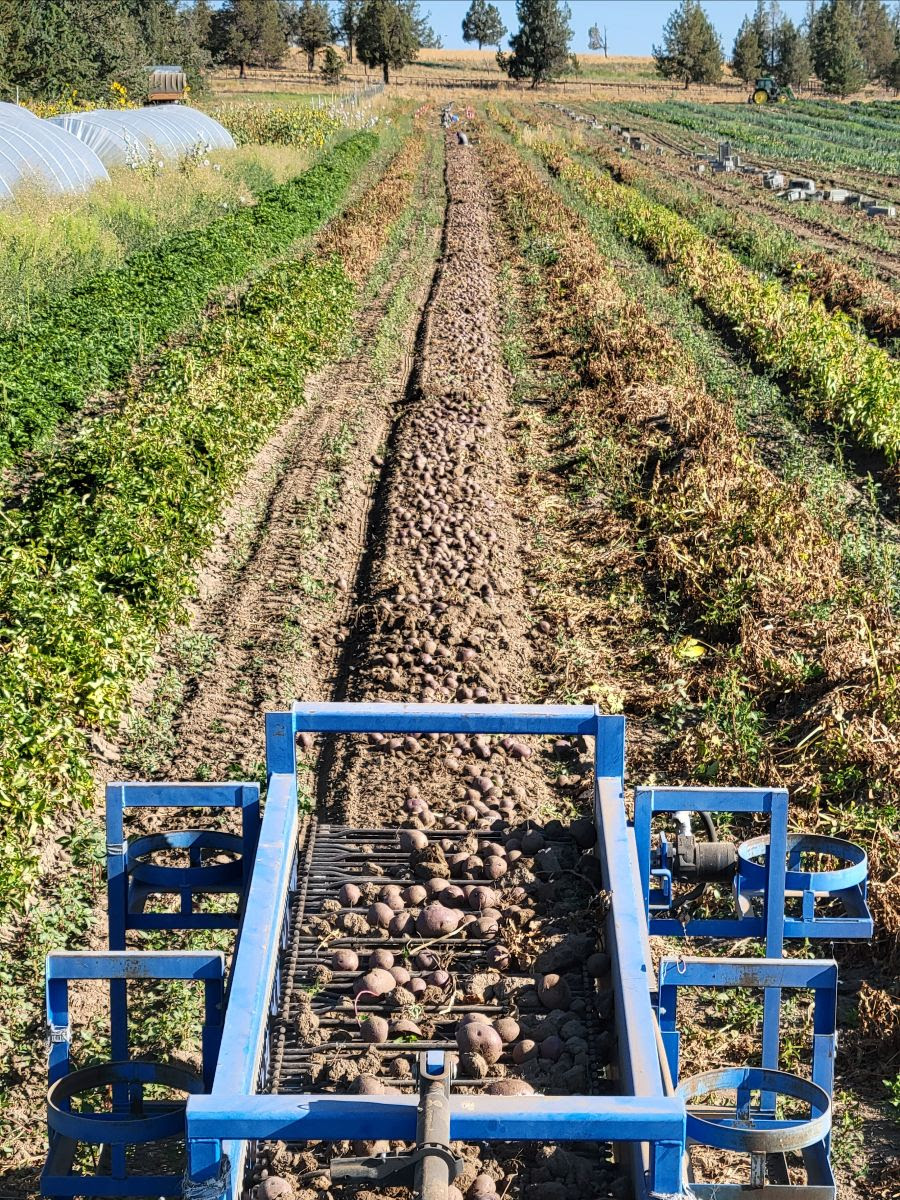
|
A little wildlife spotting while weeding this week! Sarahlee found a baby snack out in the fields. And we got almost 3/4 of our storage potato harvest done! Big week for sure. Digging deep, both for potatoes and energy, continues as we carve out the time for putting up our winter root veg.
|
Veggie ID: Parsley |
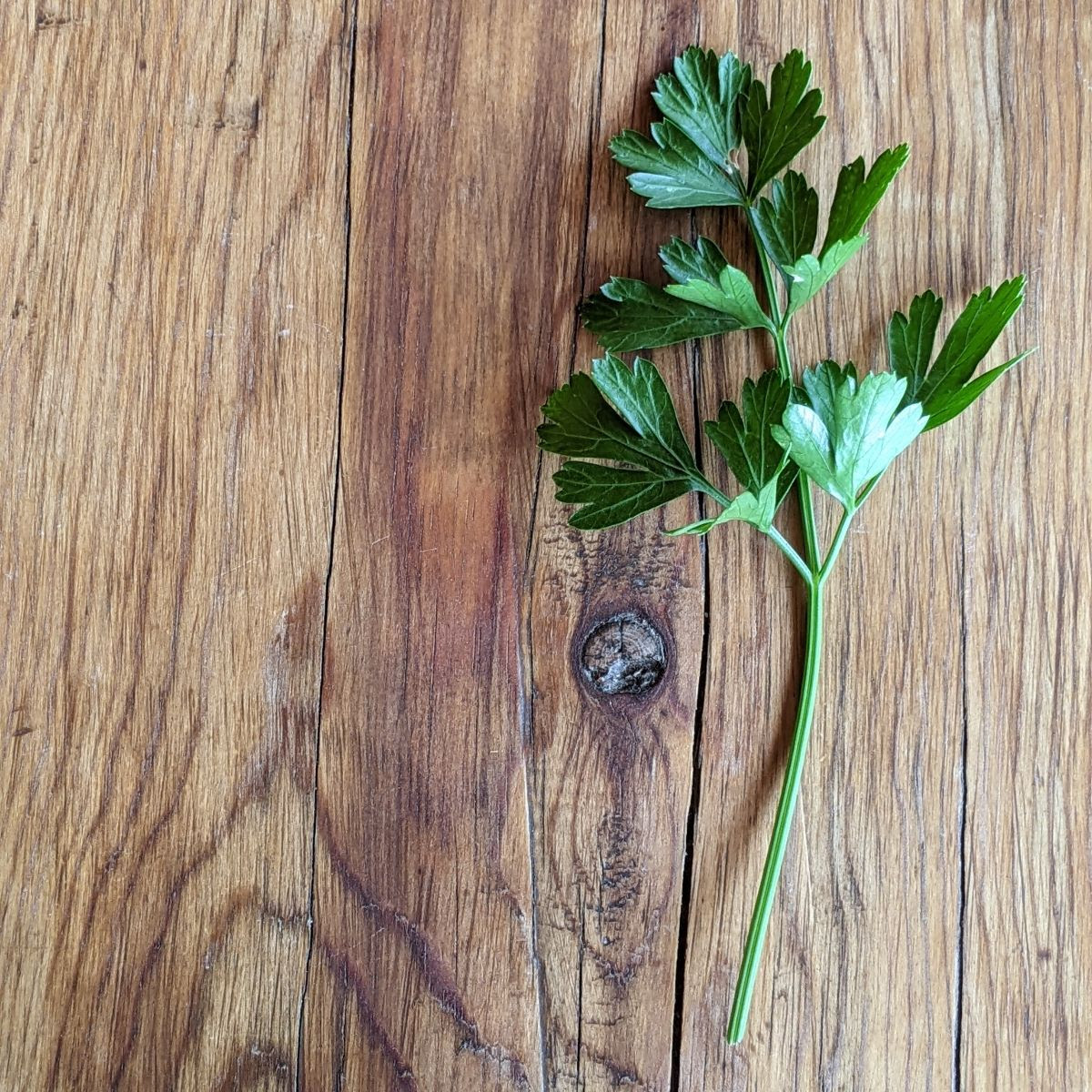
We grow Giant of Italy parsley. This parsley features large leaves, sturdy stems, and an incredible flavor.
To store: Stand upright in a container with an inch of water. I like to use a ball jar about half full of water. Then cover the herbs loosely with a plastic bag and refrigerate for up to 2 weeks.
To prep: Chop the leaves and stem before cooking. The stem can be used to flavor soups and stews too.
To dry: microwave option: Place a piece of paper towel on a glass plate. Layer the parsley evenly around the plate being sure not to overlap. Cover with another piece of paper towel. Microwave on high for 1 minute. Leaves will be dry. Crinkle them with your finger and place them in a dry container, such as a Mason jar with a lid.
To freeze: Chop parsley finely and freeze in ice cube trays with water. Pop out frozen cubes and freeze in a freezer bag.
Vegetable CSA Harvest List
We think our foundation vegetables this week will include Parsley. We will let you know on Wednesday if that changes and how many other items you will get to select.
We have been keeping an eye on the hoops and 2-acre garden and have a pretty good idea of what is out there and ready to be harvested, but this is a Sunday estimation of what we will be harvesting on Tuesday. Also, because we have a market style CSA, this isn’t a guarantee of 1 of all these things for everyone. Instead, this will be the variety of what will hopefully (fingers crossed) have for you to choose from this week.)
Other Vegetable Options will probably include:
Basil
Beets
cauliflower
Carrots
Chard
Cucumbers
cherry tomatoes
large heirloom tomatoes
tomatillos
Melons
variety herbs
Fennel
Kale
Cabbage
Yod Fah
green zucchini
yellow zucchini
patty pan squash
Fresh onions
potatoes
sweet peppers
hot peppers
|
|
Recipe Corner
Let’s take a look at parsley and some organ meat cut recipes this week!
(Nic really likes this one because it is a very french countryside nourishing dish yet elegant and you can make almost all of it from the Farm Stand. Don’t be afraid of the grabiche (gra-beesh) and feel free to substitute whatever herbs you have on hand.)
INGREDIENTS
Tongue
3 Tbsp neutral oil, like grapeseed or vegetable
2 onions, roughly chopped
2 Stalks celery, roughly chopped
1 large carrot, peeled and roughly chopped
1 3- to 3½-pound beef tongue, rinsed
12 parsley stems
2 dried bay leaves
½ Tbsp black peppercorns
4 Tbsp red-wine vinegar
1 Tbsp kosher salt
Fresh parsley
Extra-virgin olive oil
Farm House Grabiche
1 large egg
1 teaspoon Dijon mustard
1/3 cup extra-virgin olive oil
1 teaspoon red wine vinegar
1 cornichon or pickle
8 to 10 small capers, drained, rinsed, and squeezed dry
about 1/4 cup (gently-packed) mixed chopped herbs, flat-leaf parsley, chervil, and/or tarragon
salt and freshly-ground black pepper
INSTRUCTIONS
Tongue
- Pour the neutral oil into a large, heavy-bottomed Dutch oven set over medium heat. Sweat onion 5 minutes, stirring constantly so no color develops. Add the celery and carrot and 3 tablespoons of water. Cover with a tight fitting lid, and let the vegetables steam for a few minutes, being careful not to scorch. Add more water if necessary.
- Arrange the tongue in the pot, and add the parsley stems, bay leaves, peppercorns, red-wine vinegar and salt. Pour in enough water to just barely cover the tongue. Cover with a lid, and bring to a boil. Once the tongue braise has come to a boil, remove the lid, and reduce to a simmer.
- Cut a round of parchment the diameter of the pot and set it directly on top of the braising liquid. Simmer the tongue 4 hours, adding more water if needed to keep the tongue just covered. The tongue tends to suck up a lot of water quite quickly. Remove the tongue from the braising liquid. Strain the braising liquid (discard the solids), and return liquid to the pot.
- Peel the thick outer skin off the tongue while it is still warm. (Think of peeling an orange: find an entry point, usually on the tough side of the tongue where there is already a break and peel it off like a sock from there. It might come off in bits, but that is okay. The goal is to remove everything but the muscle.) Trim off any fat or gristle, then return the tongue to the braising liquid and let cool completely.
- To serve, cut the tongue crosswise into thin slices, and arrange on a platter in a single layer. Drizzle with a few drops of the braising liquid. Spoon the gribiche over the tongue, and top with some fresh-picked parsley leaves and a generous glug of olive oil.
Grabiche
- Cook the egg in boiling water for 10 minutes. Remove from heat, drain away the water, and cool the egg by adding ice and cold water to the pot. Once cool, peel the egg then extract the yolk.
- In a medium-sized bowl, mash the yolk until smooth with the mustard. Dribble in the olive oil, beating with a fork or wooden spoon while doing so (trying to make an emulsion), then add the vinegar.
- Chop the egg white and cornichon separately into fine cubes, about the size of the capers, and add them and the capers to the sauce. Stir in the herbs and add salt and pepper. Taste, and season with additional salt, pepper, and vinegar, if necessary. Serve at room temperature.
(This chili is a great way to serve heart without it being all up in your face. The chili is served as a topping for hot dogs or in a Frito pie but can be eaten on its own with whatever fixings are desired. Detroit’s traditional hot dog is a Koegel Vienna. If you get a pork heart and put it in here, probably best not to tell the person in your life from Michigan. They might be offended.)
INGREDIENTS
1 1/2 pounds beef or pork heart, cut into 1/8 stips or ground (either cut the hearts into cubes or mince. This is easiest when the heart is defrosted but still a bit frozen. If you have a grinder attachment for your kitchenaid, this is a great time to bust it out)
1 pound ground beef (optional- if included increase your seasoning by half or to taste)
1 Tbsp vegetable oil
2 tsp garlic salt
2 tsp chili powder
2 tsp cumin powder
2 tsp paprika
INSTRUCTIONS
- Brown the meat in the vegetable oil but do not drain it. Once it’s browned, add the spices. Also add just enough water (meat stock is also a welcome addition instead of water) to moisten the sauce, maybe a few tablespoons.
- Simmer the sauce for 30 minutes, stirring occasionally, until it’s somewhat dryer, while being careful not to let it dry completely. Served over grilled hot dogs or Fritos. Mustard and finely chopped onion are the preferred toppings for the dogs. Sour cream, chopped onions, cilantro, for the frito pie.
(This dish really highlights the flavor and texture of one of Nic’s favorite cuts of the hog. The stir fry showcases the heart without hiding it. The heart muscle works all the time so is very lean and incredibly flavorful. If you got a beef heart, make both this and the chili! )
1 lb beef or pork heart, washed and sliced into strips
2 sweet peppers, sliced
8 small carrots, sliced
a handful of broccoli, sliced lengthways
1 onion, sliced
A half head of shredded cabbage
1 garlic clove, crushed
1/2 cup hoisin sauce
salt and pepper to season
olive oil for frying
INSTRUCTIONS
- Heat a wok or deep sauté pan, adding a splash of olive oil. When the oil is hot and shimmering, add the pork hearts to the pan. Keep the heat high and the pork moving until it’s cooked through and starting to turn deliciously golden.Throw the carrots and onion into the pan and cook until the onion is softening. Add the pepper, broccoli, cabbage, and garlic along with some seasoning and fry briskly for a minute or so. With the pan still on the heat, mix the hoisin sauce through with the rest of the ingredients, combining everything well. Serve immediately with noodles or rice.
1½-2 pounds liver, thinly sliced
2 tablespoons adobo seasoning
1 teaspoon cayenne pepper
1 tablespoon celery seed
1 teaspoon onion powder
1/2 tablespoon freshly ground black pepper
1½ cups buttermilk
3 cups canola oil or any other neutral oil
2 cups all-purpose flour
2 tablespoons salt
INSTRUCTIONS
- Rinse the liver slices off with cool water and place in a medium-size bowl, season with adobo, cayenne, celery seed, onion powder and black pepper. Pour buttermilk over the season slices so they are covered and let sit for about 30 minutes. Heat the oil in a heavy bottom pan (Dutch oven would work great here) to 350F (right before smoking and when a drop of pops and sizzles).
- While your oil is heating up, take the liver out of the milk, shaking off a bit of the excess, then coat with flour (for extra flavor take some of the same spices and incorporate into the flour before dredging). Place your liver into your hot oil and cook for about 2½ minutes, then turn over and cook for another 2½ minutes. The outside of the liver should be nice and crispy. Place on a wire rack or paper towel-lined plate and season with salt.
- Serve with eggs and roasted potatoes for breakfast with gravy. You can make the same gravy and serve with mashed potatoes and collards or a bright braised green side dish. The gravy will complement the strong iron flavor of the liver.
(This is a great sauce to serve over steaks, other grilled meat cuts, or as a topping for steamed, sautéed, or roasted vegetables.)
INGREDIENTS
3-5 Garlic cloves
2 Tablespoon hot pepper, or 1 tsp red pepper flakes
1 cup Fresh Parsley
2 Tablespoon Oregano
1 1/2 Tablespoon Red Wine Vinegar
1 Tablespoon Freshly squeezed lime juice
1/3 cup Neutral Oil
1/4 tsp Fine sea salt, more or less to taste
INSTRUCTIONS
- In the bowl of a mini food processor, add garlic and pepper. Pulse until roughly chopped.
Then, add parsley, oregano, red wine vinegar, lime juice, and red pepper flakes (if using instead of a whole pepper). Pulse until roughly chopped and combined; you’re looking for a uniform mixture but not a pureed one. - Transfer the herb mixture to a bowl and cover with oil. Let seep for at least 30 minutes to allow the flavors to meld before using. Serve over grilled meats, veggies, or as a marinade (or however else you desire!). Store in an airtight container in the fridge for 3-4 days.
(With fall in the air, our minds are starting to wander towards these warm comfort dishes.)
INGREDIENTS
¼ cup butter
1 large onion diced
2 cloves garlic minced
¼ cup flour
2 cups milk
1 cup chicken broth
½ teaspoon salt
¼ teaspoon pepper
3 pounds white potatoes sliced about ⅛” thick
salt and pepper to taste
INSTRUCTIONS
- Preheat oven to 350˚F.
- Melt butter, onion and garlic over medium low heat. Cook until onion is softened, about 3 minutes. Add flour and cook for 1-2 minutes.
- Reduce heat to low. Combine milk and broth. Add a small amount at a time whisking to thicken. The mixture will become very thick, continue adding a little bit of liquid at a time whisking until smooth.
- Once all of the liquid has been added, bring to a boil over medium heat while continuing to whisk. Stir in salt and pepper and let boil 1 minute.
- Grease a 9″x13″ baking dish. Place ⅓ of the potatoes in the bottom and season with salt and pepper. Pour ⅓ of the cream sauce sauce over top.
- Repeat layers ending with cream sauce. Cover and bake for 45 minutes.
- Uncover and bake for an additional 35-45 minutes or until golden brown and potatoes are tender. Broil for 3-4 minutes to obtain a golden top.
- Allow to rest for 15 minutes before serving.

| Can’t wait to see you on Wednesday! Don’t forget it is a meat week!
The Farm Crew |



